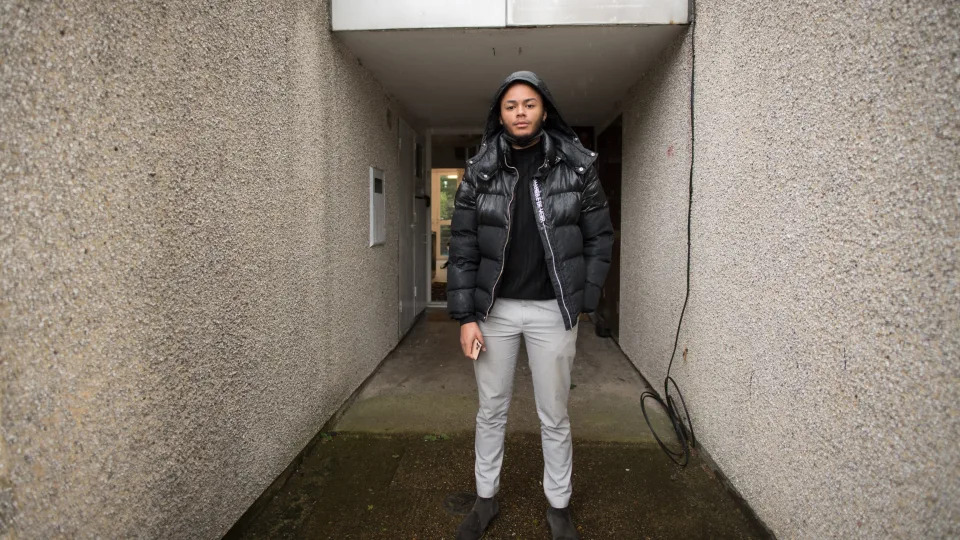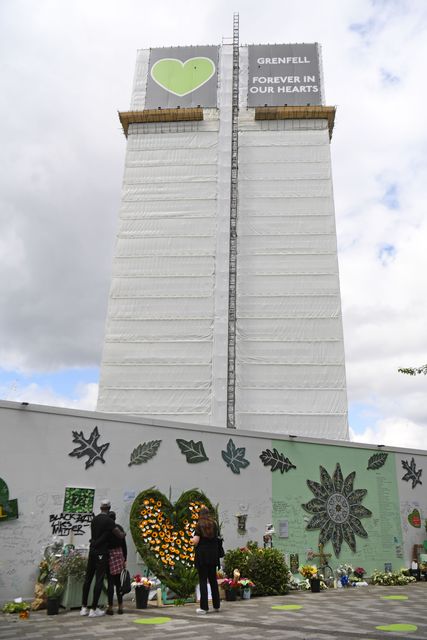Experts said building’s cladding, similar to that used in London’s Grenfell Tower, may have been to blame for the fire’s ferocity

Firefighters work at the burned building in Valencia, Spain yesterday. Photo: AP

People look at an apartment building where a fire occurred, in Valencia, Spain, on Feb 23, 2024.
PHOTO: Reuters
PUBLISHED ON FEBRUARY 23, 2024
VALENCIA, Spain - At least nine people were killed by a huge fire that ripped through an apartment block in an affluent district of Spain's third largest city, Valencia, authorities said on Friday (Feb 23).
The blaze, fanned by strong winds, engulfed the block in Valencia's El Campanar district within half an hour on Thursday evening, witnesses said.
Still shaken, one of the surviving residents, 53-year-old Jose Carlos Perez, told Reuters he grabbed what he could and rushed out of his 12th floor apartment after he saw smoke outside his window.
"Physically, I'm dressed, but inside I'm naked because I have nothing, because everything I had was there," Perez, who lived alone, said as he stood outside the SH Valencia Palace hotel, where more than 100 survivors like himself are being temporarily housed.
Firefighters with masks and oxygen tanks worked their way through the charred building on Friday looking for bodies or survivors. Valencia Mayor Maria Jose Catala said later in the day that there were no more missing people.
On Friday evening, authorities confirmed on X police had revised the number of dead to nine from 10 in the process of identifying the bodies in the building.
Two firefighters suffered serious injuries and were hospitalised.
Valencians flocked to donate clothes, medicines and toys for surviving residents who lost all their belongings in the fire.
The director of the SH Valencia Palace hotel, Javier Valles, said they were temporarily housing 110 people and a regional official said they would receive money for daily costs. The majority of survivors are staying with relatives.
"People were very affected...the least we could do was help," Valles said.
'Lost everything'

PHOTO: Reuters
Visiting the scene on Friday, Prime Minister Pedro Sanchez said residents "had lost everything in a matter of minutes in this terrible fire".
Emergency services said the fire began on the fourth floor of one of the towers but gave no cause. A local magistrate has opened an investigation into the blaze.
Esther Puchades, a representative of insurance inspection agency APCAS, told RTVE that a lack of firewalls and use of the plastic material polyurethane on the facade would have contributed to the rapid spread of the blaze, a comment evoking memories of the deadly Grenfell Tower fire in London in 2017.
The association for the polyurethane industry said in a statement no polyurethane was used in the building's cladding.

PHOTO: Reuters file
A 2007 promotional video by the building's developers highlighted the "innovative aluminium material" used to clad the building's exterior, which passed "rigorous quality checks". It did not mention polyurethane.
The spread of the 2017 fire in the Grenfell Tower block in west London that killed 71 people after an electrical fault was blamed on the use of highly flammable external cladding.
Dental experts headed to Valencia from other parts of Spain to help identify charred bodies, while police collected DNA samples from relatives for the same purpose. An acrid smell hung in the air at the site of the fire.
Panicked residents had rushed to balconies to plead for help as burning embers fell to the ground during the fire. At least two people were rescued from their balconies on cranes.
The building, comprising two towers linked by what its developers described as a "panoramic lift", was completed in 2008, officials said. It had 138 apartments, newspaper El Pais reported.
Residents of another block of flats in Valencia by the same developers expressed concern over the materials used on their own building and urged authorities to investigate.
"Everyone is very worried," said 42-year-old resident Andrea Martinez, saying she would leave Valencia over the weekend as she needed to "disconnect" from what happened. "Things don't happen until they do."
Valencia decreed three days of mourning, cancelled local football matches and suspended the start of the city's month-long, annual "Fallas" festival which features the torching of large cardboard statues and a fireworks display.
ALSO READ: Spanish firefighters battle blaze engulfing apartment building in Valencia

















